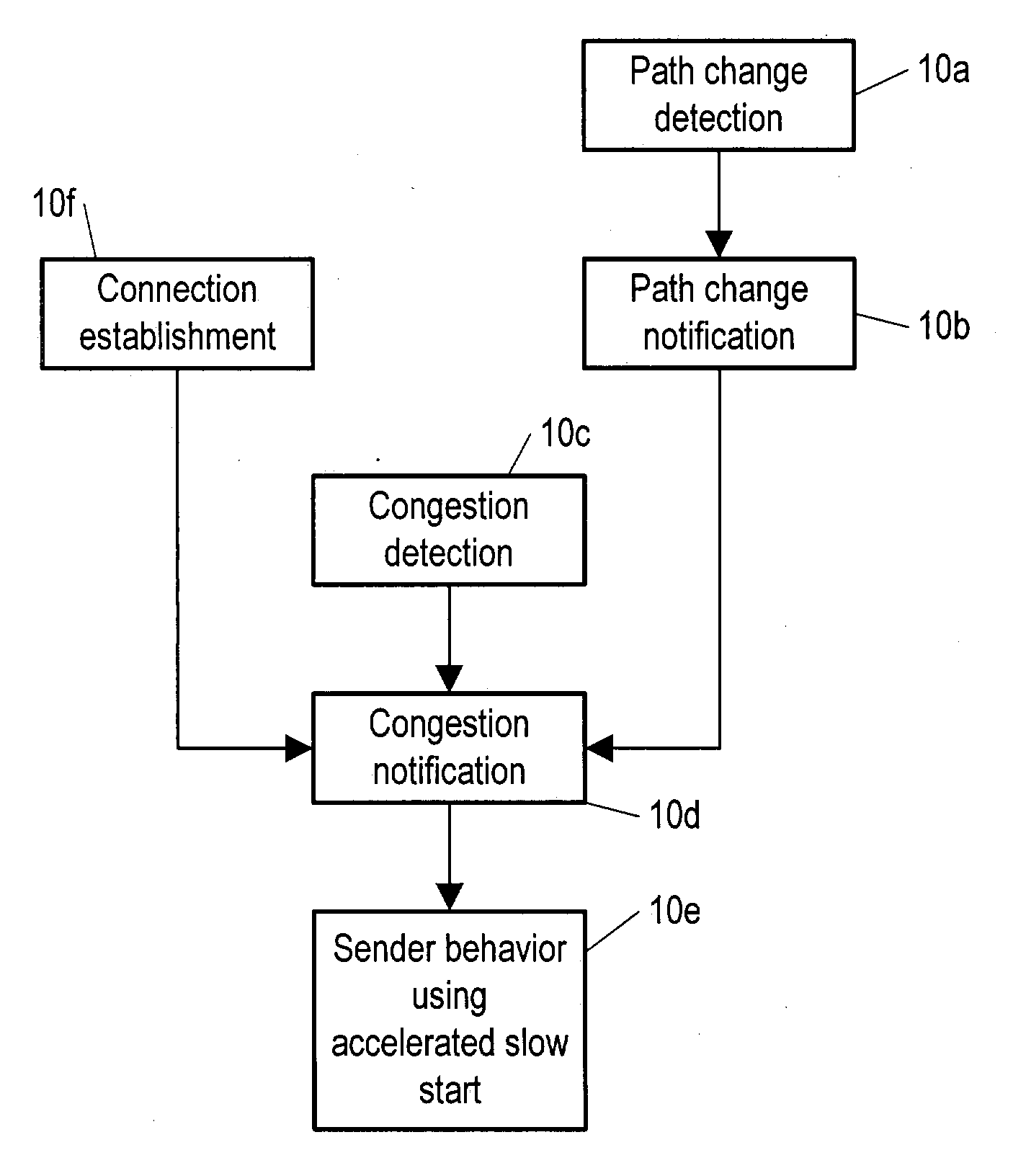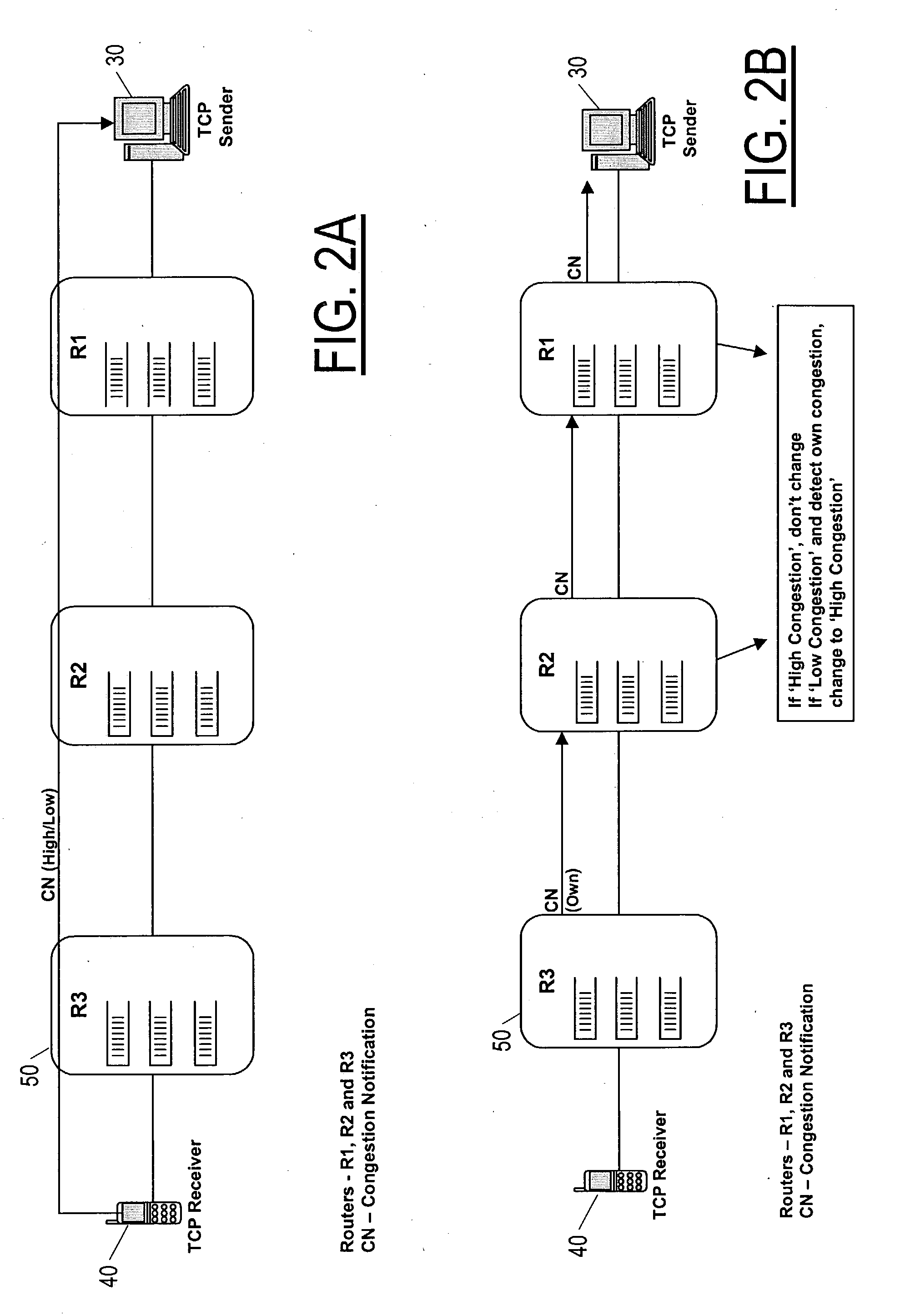Method and apparatus for accelerating throughput in a wireless or other telecommunication system
a wireless or other telecommunication system and throughput optimization technology, applied in the field of telecommunication applications, can solve the problems of slowing down the transmission rate at the sender, the state of the new path may be quite different, and the current tcp is not designed to cope with such a wide fluctuation in congestion, so as to achieve the effect of accelerating the transmission rate of the sender, reducing congestion, and reducing the number of calls
- Summary
- Abstract
- Description
- Claims
- Application Information
AI Technical Summary
Problems solved by technology
Method used
Image
Examples
Embodiment Construction
The description here uses the following definitions, which all have to do with TCP applications of the invention, although the invention is also of use in case of communication by TCP or any similar protocol, including e.g. streaming protocols such as RTCP or datagram protocols. SEGMENT: A segment is any TCP / IP data or acknowledgment packet (or both), or a corresponding entity for communication according to other packet-based protocols. RECEIVER WINDOW (rwnd) The most recently advertised receiver window. CONGESTION WINDOW (cwnd): A TCP (or other packet-based protocol) state variable that limits the amount of data a TCP layer can send. At any given time, according to standard operating procedure, a TCP layer does not send data with a sequence number higher than the sum of the highest acknowledged sequence number and the minimum of cwnd and rwnd. INITIAL WINDOW (iwnd): Initial size of congestion window at the sender (i.e. the size at the start of a TCP session).
OVERVIEW OF THE I...
PUM
 Login to View More
Login to View More Abstract
Description
Claims
Application Information
 Login to View More
Login to View More - R&D
- Intellectual Property
- Life Sciences
- Materials
- Tech Scout
- Unparalleled Data Quality
- Higher Quality Content
- 60% Fewer Hallucinations
Browse by: Latest US Patents, China's latest patents, Technical Efficacy Thesaurus, Application Domain, Technology Topic, Popular Technical Reports.
© 2025 PatSnap. All rights reserved.Legal|Privacy policy|Modern Slavery Act Transparency Statement|Sitemap|About US| Contact US: help@patsnap.com



